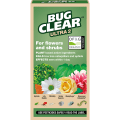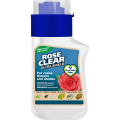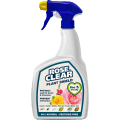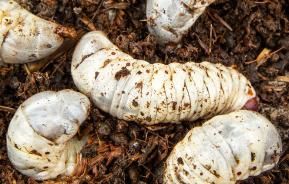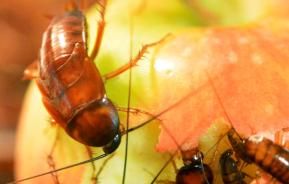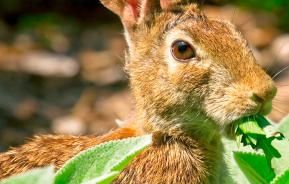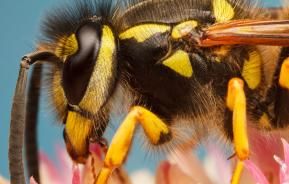Despite their small size, flea beetles can cause a lot of damage – especially as they like eating the leaves of young plants and seedlings – often leading to them becoming stunted or even dying.
Description
Flea beetles are very small beetles (not surprising, given their name!). They are mostly about 2mm (about 1/10in) long, but big bugs can be 3-4mm. Commonly shiny black, but some have a yellow stripe down each wing case, some even come in a dark metallic blue. Athletic little pests, they will jump off the leaves if they are disturbed, so go gently if you wish to make sure of catching them. They often appear in quite large numbers and do a lot of damage.
Symptoms
Certain species of the adult flea beetle are fond of cabbages, Brussels sprouts, swede and other brassicas; some like potatoes; others are equally fond of wallflowers, alyssum, aubrieta and nasturtiums. Whatever the species, they all eat little round holes in the leaves, peppering the whole leaf surfaces. Either that or they leave the holes part-finished and the remaining tissue turns brownish white. It’s not just the adults, as the larvae can also cause problems. They feed on the root systems of the plants concerned, so if the plant is wilting as well as suffering from holed leaves look underground.
Watch out for fuchsias. The blue metallic flea beetle loves these plants and both the adult beetle and the larvae can be found feeding on leaves at the shoot tips.
Treatment and control
General tips
Beetles don’t like it wet, so frequent watering or misting of the foliage will help keep them away.
Keep young plants and seedlings growing strongly, so they can get through this susceptible phase of their growth cycle.
Covering plants with horticultural fleece or small mesh netting will help reduce damage by excluding the adult beetles.
Chemical control
Spray affected plants with a suitable and approved insecticide.

